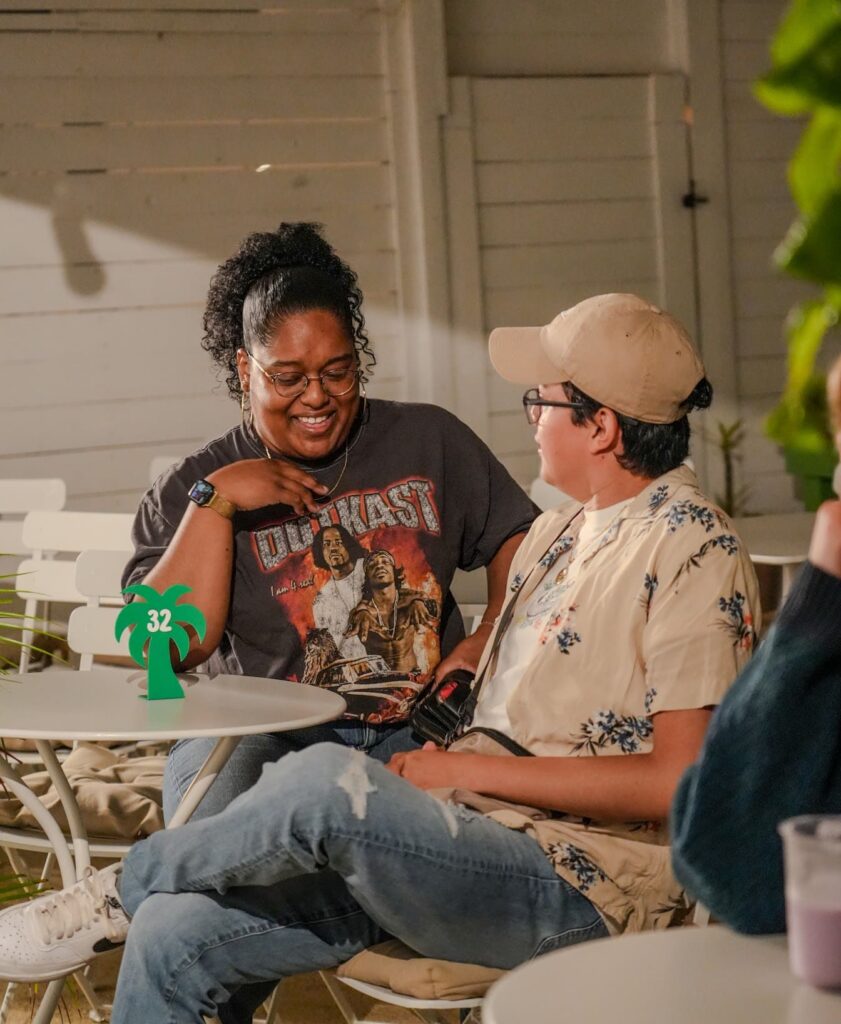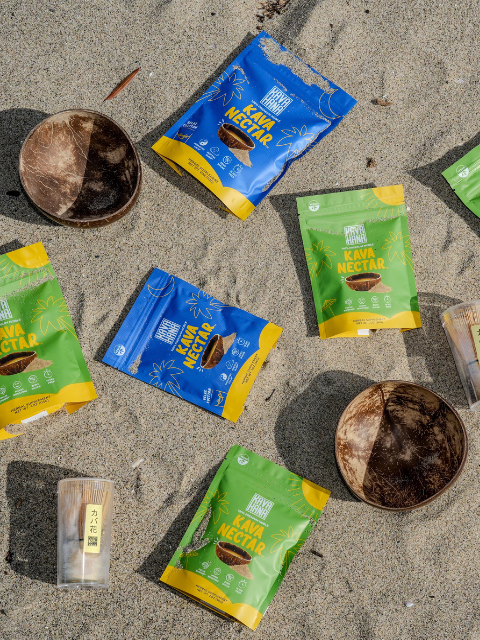Life is stressful, and finding ways to unwind can be a challenge. Even vacations, meant to be a source of disconnection and relaxation, often become stressful. This is one reason why drinking alcohol is so popular. It’s a socially acceptable way to unwind after a busy and stressful day. But the side effects and hangovers can be terrible, especially as we get older. This is where kava and Kava Nectar come in as an alternative.
Kava is a plant-based, non-alcoholic drink that you can really feel. It’s been used for over 3000 years in the Pacific islands as a way to relax and socialize after work. It also has a variety of medicinal uses, like supporting healthy sleep, pain relief, and helping manage anxiety.
Some people are surprised to learn how much kava can help combat stress and anxiety and help with relaxation. Several factors contribute to its effects.
The active ingredients
Kava’s effects are driven by its active ingredients, kavalactones. These potent chemicals are found in the plant’s roots and cause small changes that affect how we feel.
Even though 18 different kavalactones have been identified, only six are responsible for about 96% of kava’s effects. Kavalactones can give two types of feelings: those that affect your mind (heady) and your body (heavy). Heady kavas calm the mind and help with anxiety and sociability. Heavy kavas make you feel tired, and your body and limbs are weighed down and heavy.
The six kavalactones linked to kava’s benefits are:
- Methysticin (M)
- Dihydromethysticin (DHM)
- Kavain/kawain (K)
- Dihydrokavain/kawain (DKM)
- Demethoxyyangonin (DMY)
- Yangonin (Y)
The two best known for helping with anxiety are kavain and dihydrokavain. They are abundant and have the most impact on the GABA receptors.
Kavalactones act directly on the brain, changing certain brain chemicals and stimulating the relaxing and calming feelings kava is known for.
How it works in your brain
Kavalactones interact with neurotransmitters, the chemical messengers of the brain. Neurotransmitters communicate important signals from the brain to the rest of your body. They control things like muscle function, heart rate, blood pressure, hormone levels, stress, memory, and learning.
There are three classes of neurotransmitters:
- Excitatory: Stimulate brain cells to promote messages being sent between cells. This increases brain cell activity and the number of messages sent.
- Inhibitory: Block or prevent messages from being passed along to other cells. They decrease the activity of a cell and the number of messages being sent
- Modulatory: Change how cells communicate with each other by influencing the effects of other chemical messengers. They can impact a larger number of cells at the same time.
The neurotransmitter kava interacts with most is gamma-aminobutyric acid or GABA for short. GABA is the body’s main inhibitory chemical messenger, reducing the communication between cells to slow down things like motor function and visual control and regulating anxiety.
GABA
Kavacaltones act by increasing the amount of GABA. Its inhibitory nature is what gives kava its calming effects, and it’s a well-known therapeutic target for anxiety disorders and stress reduction.
Research shows that kava can increase GABA in the brain by increasing the number of receptors on your brain cells, which impacts how much GABA is released and, therefore, affects how we feel.
We have two types of GABA receptors: GABA-A and GABA-B receptors. While they are different categories of receptors and are driven by slightly different functions, they have the same overall calming effect.
GABA-A receptors make nerve cells less excitable and can make you feel calm and sleepy. These receptors are targeted in many common anti-anxiety medications. GABA-B, on the other hand, calms nerves in a different way, acting more on muscles and pain pathways. These are often targeted by muscle relaxants and medications for chronic pain.
We still don’t know exactly how kava acts on GABA receptors; there are a few theories.
- It might increase the activity and number of GABA-A receptors, meaning more GABA would be able to bind to cells, increasing the calming effects and feelings.
- There are GABA-A receptor subtypes that are not affected by some traditional anxiety medications, broadening the range of calming effects it can have.
- It can block sodium-gated ion channels as well as calcium channels, preventing brain cells from firing too much, which can lead to anxiety and an overstimulated nervous system.
- It may also block the excitatory neurotransmitter glutamate, which helps restore balance between neurotransmitters and promote relaxation.
- Promoting GABA-A receptor function, enhancing their inhibitory effect, and causing fast-acting relief from anxiety.
The science of anxiety
One of the most exciting things about kava’s boost in popularity is that it’s gaining the attention of researchers and scientists. We now know that kava is proven to reduce anxiety symptoms. In some cases, it’s argued to be more beneficial than anxiety medications and has no negative side effects.
Anxiety disorders come in various forms, such as social anxiety, where we feel nervous in social situations, and generalized anxiety disorder (GAD), where we have persistent anxiety lasting over six months. It’s often joined by symptoms like restlessness, fatigue, irritability, difficulty sleeping, and difficulty concentrating.
Research suggests that kava, particularly its active component kavain, may reduce anxiety by working through the same pathways as medications like benzodiazepines. Clinical studies have shown that it can be more effective than a placebo in reducing anxiety symptoms, highlighting its potential as a viable treatment option with fewer side effects compared to conventional anxiety medications.
While there isn’t research yet on social anxiety, it has a long cultural history and anecdotal stories about how the calming and sociable effects of kava have been beneficial for those dealing with social anxiety.
Not only that but many sleep disorders are related to anxiety and our brains being overactive with thoughts and worries. By reducing these anxious symptoms, kava has been shown to help improve sleep quality by falling and staying asleep.
The takeaway
What this all means is that kava’s effects actually make some changes in our brains for the better. The kavalactones can do their job by boosting GABA and giving us the relaxing, calming, and clarifying effects kava is known for.
* Please note that the majority of kava research pertains to kava extracts, which often undergo significant processing and may contain additional ingredients and fillers that can influence their efficacy. It is crucial to consider this distinction when reading about kava studies. To draw an analogy, enjoying natural kava as a beverage can be likened to experiencing a freshly brewed cappuccino, whereas kava extracts are akin in functionality to a caffeine pill. Both forms have their unique benefits and can cater to different preferences and needs. While it’s helpful to understand research on kava extracts, please view it critically and remember that natural kava offers a uniquely holistic experience.


